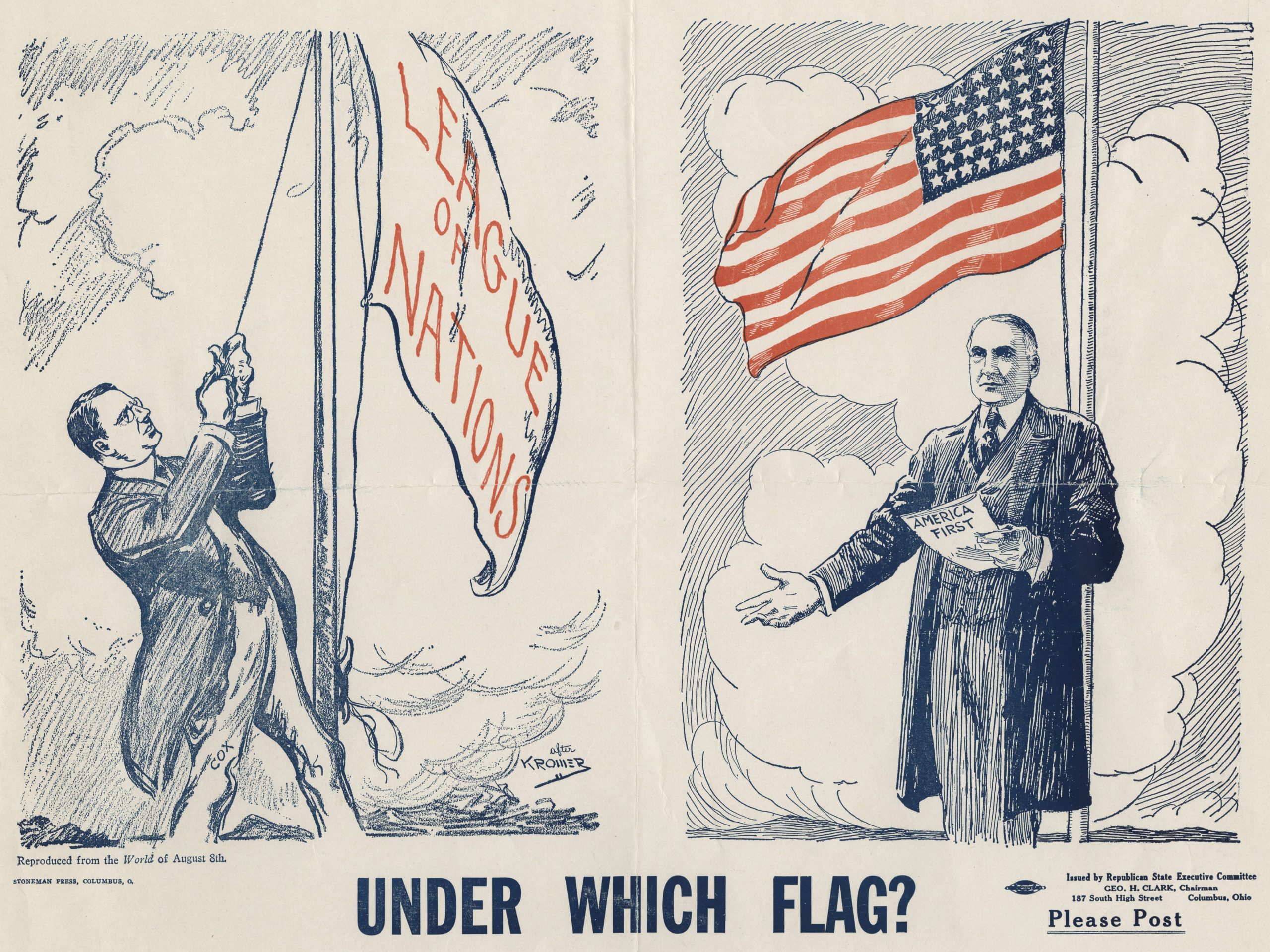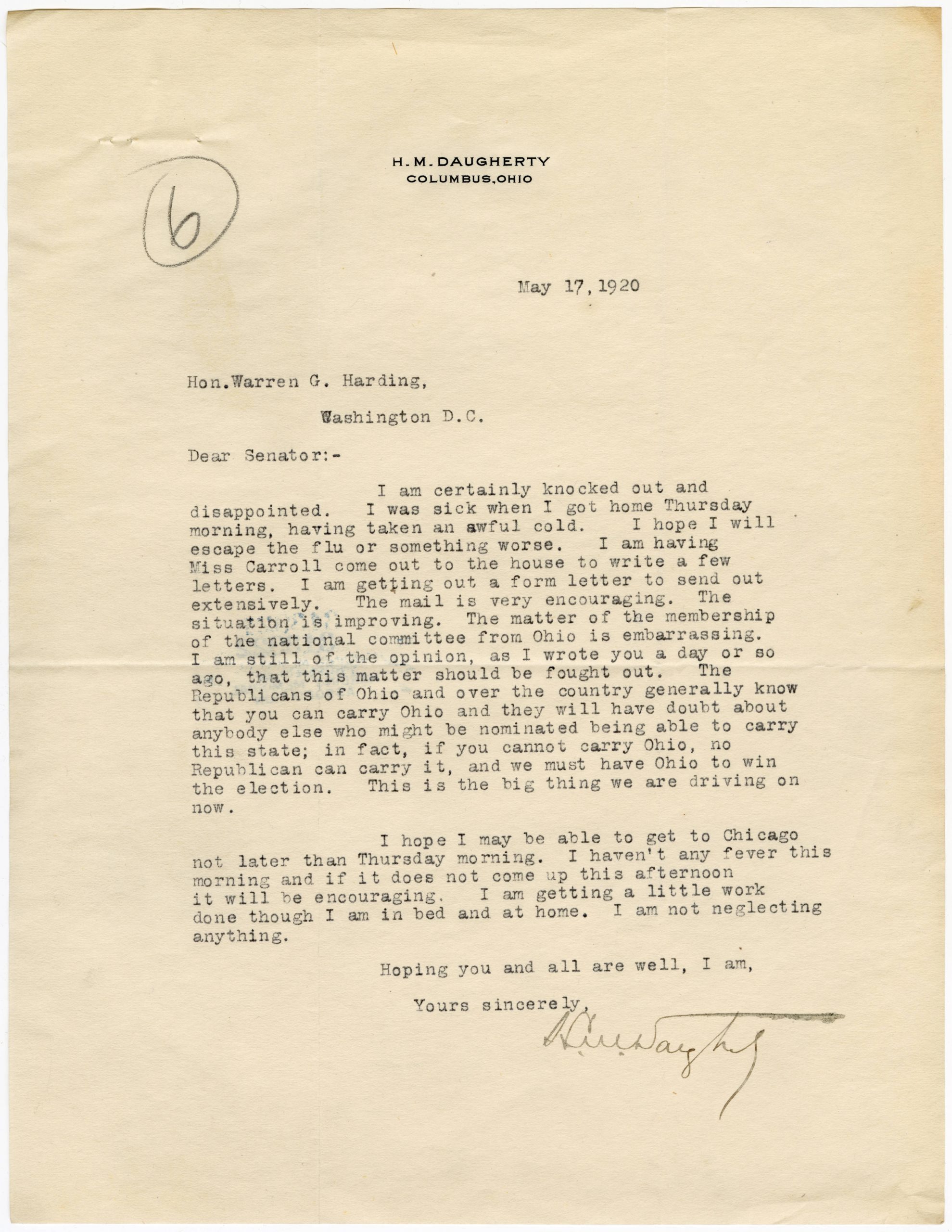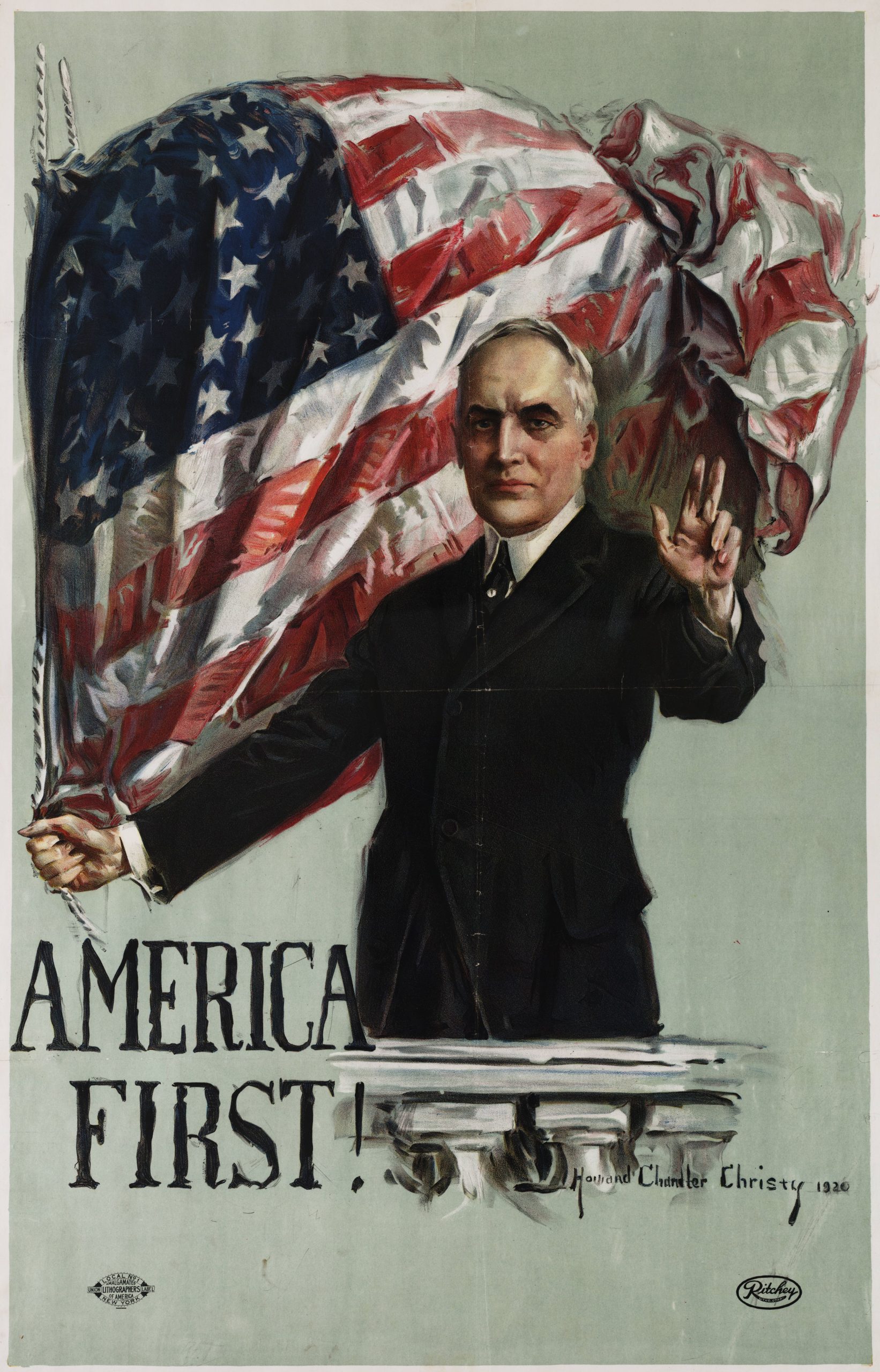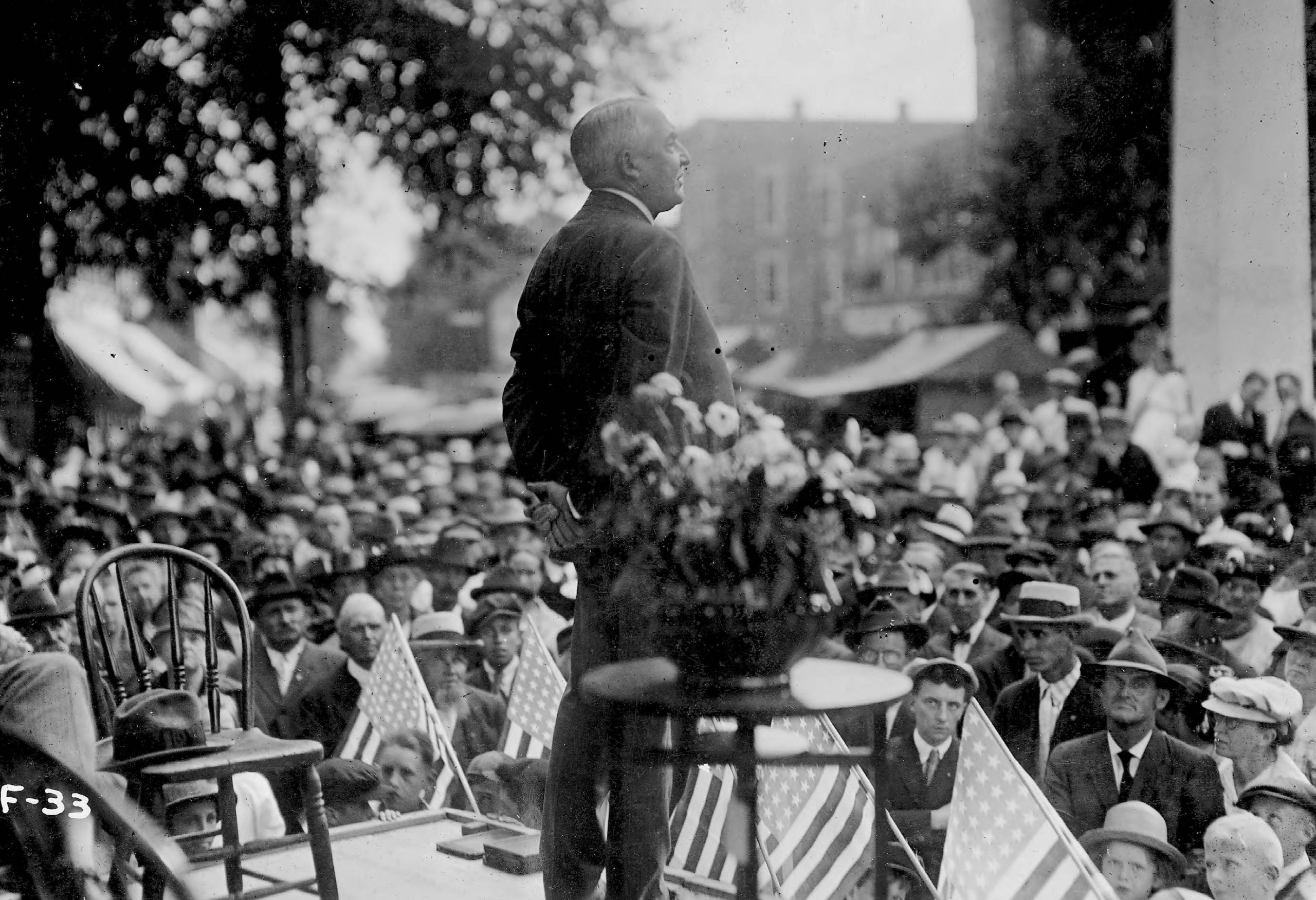Ohio’s Fight for the White House: Warren G. Harding wins the 1920 Presidential Election

This year marks the 100th anniversary of Warren G. Harding’s presidential victory over Democratic nominee, and Ohio Governor, James M. Cox. Not only were the American people divided on many controversial issues that election year, but factions within the Republican Party resulted in the nomination of Harding, who was otherwise an unlikely candidate for the presidency.

In 1919, the U.S. political climate was tense and divided. The country was suffering from the economic downturn and increased unemployment following World War I, African Americans fought against racial injustices when their return from the war was met with violence and blame for the nation’s troubles, women were vigorously fighting for suffrage, and dry activists were pushing hard for a national prohibition amendment.
Not only was the country divided on these important issues, but factions within the Republican Party made Harding’s nomination, initially, an unlikely outcome of the 1920 Republican National Convention (RNC). In 1912, Theodore Roosevelt left the Republican Party to form the Progressive Party, which focused on reforming many traditionally Republican values by instituting child labor laws, fair wages for laborers, and lower tariffs. The more traditional Republicans, referred to as the Old Guard, supported policies that protected U.S. businesses, as many of them had personal financial stakes in big business. Harding aligned more so with the Old Guard throughout his senatorial career, but didn’t take firm stances on controversial issues, and therefore had no enemies within the Progressive Party. Roosevelt returned to the Republican Party, and it seemed as though he was the Party favorite. However, his unexpected death in January 1919 changed the Republican approach to the election.

The main Republican contenders were General Leonard Wood, a medical doctor in the U.S. Army, and Illinois Governor Frank O. Lowden, both former Progressives. Leading up to the RNC, Wood had strong support across the country, including southwestern Ohio, largely promoted by Rudolph K. Hynicka, Cincinnati politician and Ohio representative to the Republican National Committee, and William Cooper Procter, head of Procter & Gamble. Harding’s campaign was very carefully managed by attorney and political insider Harry M. Daugherty, who thought Harding’s low stakes standing could win him the presidency. Luckily for Harding, the nomination votes were deadlocked between Wood and Lowden at the RNC, and delegates ultimately chose underdog Harding, a reliable and loyal Republican, as their candidate, and selected Massachusetts Governor Calvin Coolidge as his running mate.
After securing the nomination, Warren and his wife Florence left Washington D.C., to return to Marion, where Harding conducted a successful front porch campaign from his home. Harding’s campaign slogan, “a return to normalcy,” along with his America First plan, conveyed that Harding would return the country to the state of security and ease of daily living that Americans thought was the norm prior to World War I.

This idea of “return to normalcy” complimented his front porch campaign, which portrayed him as a wholesome American, and gave him a platform to meet with people at his home and showcase his personable demeanor. Harding regularly gave speeches from his home, where he continued to avoid controversial issues. He instead focused on topics most people agreed on—stimulating the economy, creating jobs, and instituting protective tariffs. Closer to the election, Harding toured the country giving speeches and attending events in order to solidify support outside Ohio.
Harding’s Democratic opponent, however, did not run a successful campaign. Cox campaigned on the same issues that President Wilson championed, especially U.S. involvement in the League of Nations, which cost him the election. On his 55th birthday, Harding defeated Cox in a landslide, winning 37 of the then 48 states.
To learn more about his early political career, his campaign strategies (including insider perspectives documented in correspondence between Harding and Daugherty!), his presidency, and death and legacy, browse the Warren G. Harding Collection on Ohio Memory! You can also visit the newly renovated Harding Presidential Sites in Marion, which include the Harding Home, Harding Memorial, and the Harding Presidential Center.
Thanks to Kristen Newby, Digital Projects Coordinator at the Ohio History Connection, for this week’s post!
Ohio Memory is celebrating 20 years! Visit our blog all year long to learn more about our program, partners and collections.



Leave a Reply
You must be logged in to post a comment.